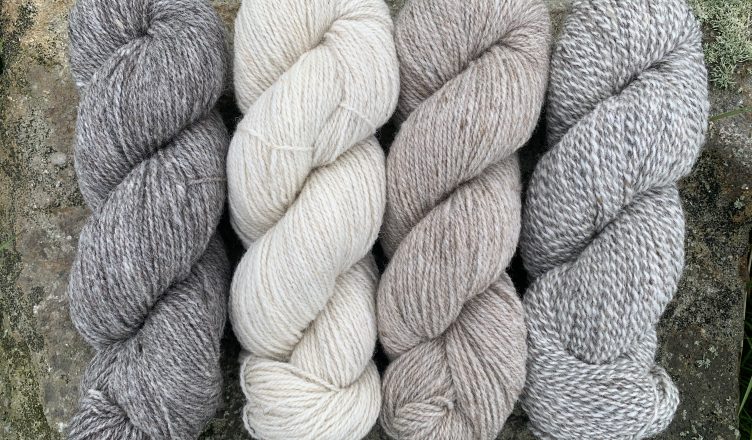Shetland Wool Week is an annual event created in 2009 celebrating “Britain’s most northerly native sheep, the Shetland textile industry and the rural farming community on these islands.” Shetland is traditionally known for a variety of textile industries, such as tweed weaving, lace knitting and stranded colourwork knitting, most notably Fair Isle knitting. The biggest of the Shetland islands can be reached by a 12 to 13-hour ferry journey or one-hour flight from Aberdeen (weather permitting). Many might see Shetland as one of Europe’s more adventurous holiday destinations, favoured by bird watchers and people who love the outdoors, but every year in late September hundreds of knitting enthusiasts from around the globe make their way to these Scottish islands for Shetland Wool Week. We talked with Dr Carol Christiansen, Curator and Community Museums Officer at the Shetland Museum and Archives and member of the Shetland Wool Week board, to find out why people are willing, eager even, to travel hundreds of miles for a craft they can participate in from the comfort of their own homes. We also talked with Rachel Challoner, a crofter on Fair Isle, who has recently started to breed Shetland sheep for their wool, the only crofter who still breeds sheep for their wool.
Knitting might be one of the most common crafts today, practised around the world, with many countries and regions having their own traditions and patterns. How did Shetland manage to garner attention and enthusiasm for its local traditions, how are these traditions changing, and what does it mean for local knitters that practitioners from as far as the USA or Japan knit their patterns and want to learn their technique? And what is the connection between crofting and knitting in Shetland’s wool heritage today?
Heritage and commercialism
For hundreds of years, Shetland had been known for its textile industry. ‘Industry’ might not be the right term here, because although weaving and knitting have been mechanised and modernised, they were never industrialised. These days, most items are made using knitting machines, but finished by hand, resulting in top quality garments. Knitting has always been a commercial craft, mostly carried out by women. With little access to transportation and often living remotely, scattered across the islands, many women would stay at home and knit. They would travel into town once a week to sell their goods.
Although they would knit for the people around them as well, as soon as young girls were taught to spin and knit they were also taught this was a way to make money. Traditional patterns are designed in such a way that they can be knitted fast, to optimise production. When Fair Isle knitting, in particular, became popular in the 1920s, demand for woollen items grew. Where commercialism and heritage craft are often seen as two opposing forces, in Shetland they have always been two sides of the same coin.
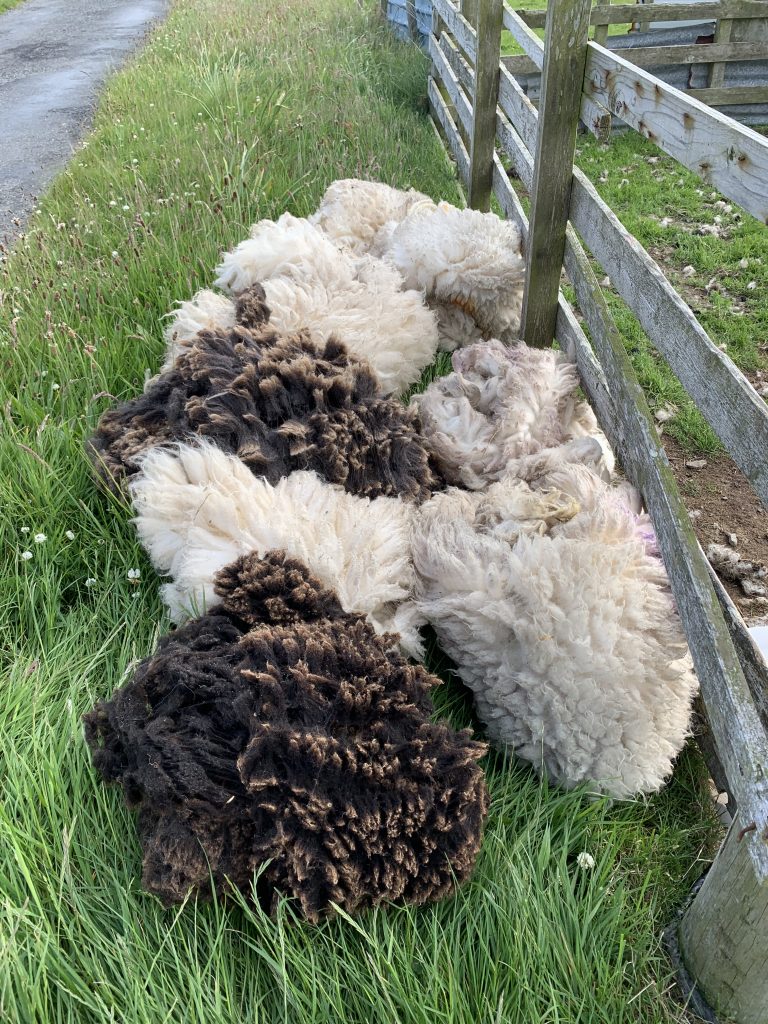
When the offshore oil industry came to Shetland in the mid-1970s, this resulted in major changes in both women’s career prospects and their mobility. With other jobs offering better pay, knitting became a hobby at best. These days, the population of ‘commercial knitters’ is ageing: many are in their 70s and 80s. Some still take on commercial work finishing garments mostly. Their working relationships are intertwined with social relationships, a network designers or producers from the outside cannot easily tap into. Now the commercial side of knitting is less relevant, women tend to knit patterns they like, rather than commissions. When a well-known haute-couture brand came to the island, with the desire to honour local traditions and to commission more than 100 lace-knit dresses, they could not find any knitters who would take on that job. Although the craft is still popular, the commercial tradition, if you like, has changed.
An additional consequence of knitting turning from a job to a hobby is that highly skilled knitters who would have traditionally made a living out of knitting, now knit for charity events or church sales, which operate at a very different price point. This has made it harder for those who do still knit commercially to ask a fair price for their products.
Bringing outsiders in
The unique qualities of Shetland wool and woollen products have drawn outsiders to the islands for decades. They come to do research, often with the intention to share the outcomes, be it knowledge or patterns, with a wider audience. The local community did not necessarily support these outside researchers and would be reluctant to share their information. Still today, some are very protective of their patterns and techniques. There is a sense of wanting to protect the craft, not wanting outsiders to ‘steal’ a local tradition.
Shetland Wool Week was set up in 2009 with the specific intention to draw outsiders to Shetland and create awareness of Shetland wool and woollen products outside of the islands. Initially, locals did not engage much with Shetland Wool Week: they considered it something for tourists. What made and continues to make Shetland Wool Week a success is a combination of two approaches. First, a good marketing strategy and secondly, a continuing commitment to engage locals who are involved in the wool industry in some way, from farmers to knitters. Let us focus on the latter first.
When Shetland Wool Week began, it was part of a national (now international) event called Wool Week, organised by The Campaign for Wool, “in order to raise awareness amongst consumers about the unique, natural, renewable and biodegradable benefits offered by the fibre.” Wool Week was introduced to Shetland by Jamieson & Smith, a wool broker who buys wool from many Shetland farmers and who were involved with The Campaign for Wool. Jamieson & Smith teamed up with the Amenity Trust, which aims to safeguard Shetland’s heritage. A small event at first, Shetland Wool Week was seen by locals as an event for tourists. The Week’s organising committee has worked hard to involve the local community in a variety of ways. Part of the programme is provided by the organisation itself, but local organisations, designers and shop owners are encouraged to add to the programme. Their offer is vetted by the organisation and added to all communications and programme overview in exchange for a modest fee, while they get to keep the money made through ticket sales.
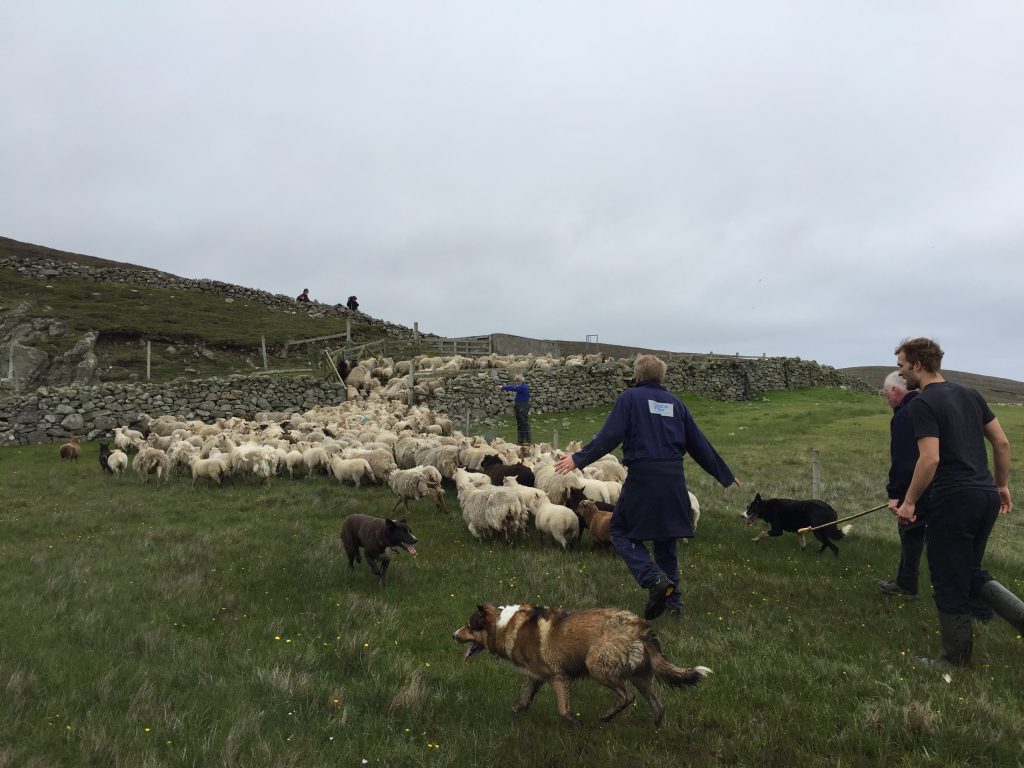
The organisation aims to provide a programme that is as diverse as possible, from farm visits to knitting classes, from lectures to social events. Although some teachers are invited to the event from elsewhere and some events are not wool-related, the vast majority of the scheduled events should both have a link with local Shetland traditions and wool, from production to finished product. The organisation makes sure to emphasise the connection between the landscape, location and climate of the islands, the quality of the wool and local knitting traditions. Shetland textiles are part of Shetland culture and visitors to Shetland Wool Week are known to want to engage in all aspects of the islands and their traditions. The relatively small scale of the event and the connection with the local community are part of the success of Shetland Wool Week. To make this possible, locals had to be willing to participate.
The organising committee first invested in relationships with experienced knitters, who were hired to teach several classes at the event. This meant these knitters could both make money from their finished product and also by teaching others how to knit in the Shetland tradition. Younger knitters are trained to become teachers themselves, to make sure this skill does not disappear either. As well as teachers, the organisation works with farmers and crofters, asking them to give tours of their farms and talk about their work. The organising committee advises farmers on creating an event that will match the expectations of participants. These farm visits provide an opportunity for farmers to explain their role in the production process. How do they work? What do the sheep need? What does the year cycle at the farm look like? Farmers also have an opportunity to shine a light on their position in a larger context and talk about the way EU laws affect their work. Shetland exists within Scotland, the UK, Europe, and local traditions and international laws do not exist independent of each other. On the one hand, Shetland Wool Week provides a wealth of opportunities to show and safeguard the complex web of traditions, skills and ways of life that all feed into the ‘wool identity’ of Shetland. On the other, it allows knitters from around the world to learn more about the background of the yarns they knit with or the patterns they love.
Managing expectations
After the first few years, Promote Shetland became involved in promoting Shetland Wool Week. Promote Shetland is tasked with raising awareness and informing tourists and prospective new inhabitants about Shetland. As such, they were perfectly placed to focus on the unique qualities of the location and local traditions, while also having a lot of experience marketing the local to an international audience. In late March, Edinburgh Yarn Festival is a highlight in many a knitter’s diary. It is here where Shetland Wool Week’s annual free hat pattern is released each year, creating a buzz around the festival which will take place in September. Once a team from Shetland Wool Week started attending the Edinburgh Yarn Festival, the number of national and European visitors grew considerably. The same happened with American knitters after a stall was booked at Vogue Knitting Live in Manhattan.
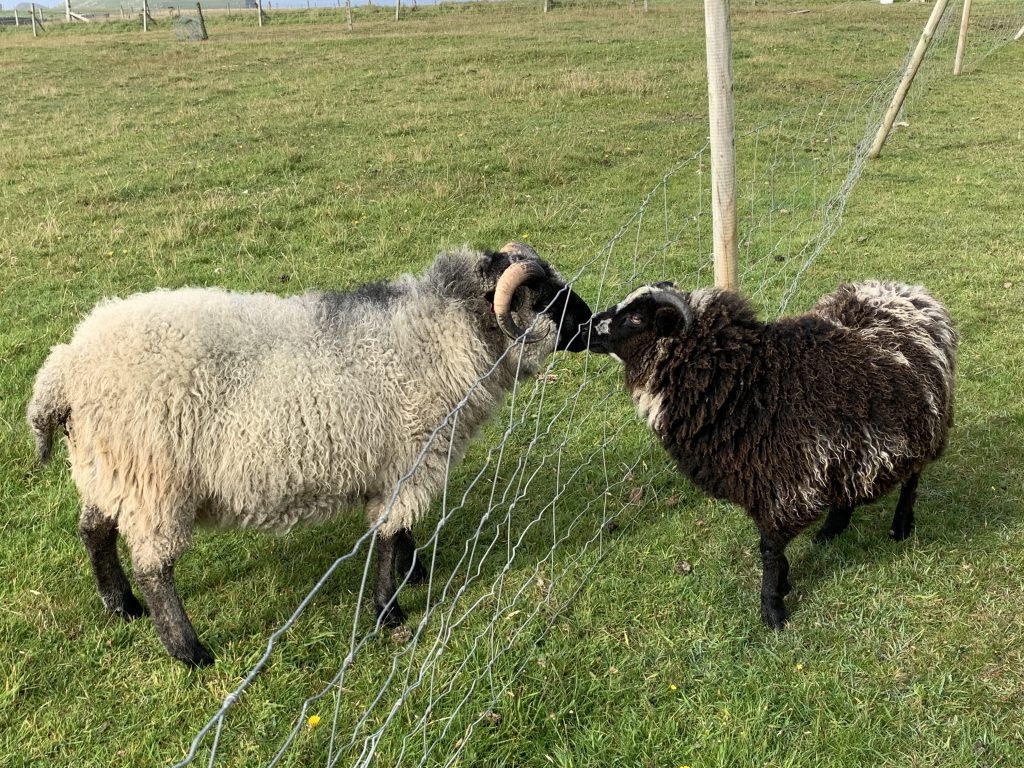
To sum up, the first two steps of this successful campaign are: Be where our audience is and meet them there; Give something to our audience that is meaningful to them, in this case, a free pattern. The last, but certainly not least, important step in the campaign is to manage expectations. More than other destinations, Shetland Wool Week has to invest time and energy in creating a clear picture of what can be expected. Not only do knitters receive information about getting to and staying on Shetland, but they also need to understand the lay of the land, need to know that they will have to rent a car and wear walking shoes and weather-appropriate clothes. Take-out coffees are not readily available on every corner and American guests, in particular, are sometimes surprised to find the local supermarket does not, in fact, have a salad bar. What makes Shetland Wool Week, and Shetland wool, so unique: the location, the rugged terrain, the remoteness, the absence of a convention centre, needs to be communicated clearly to enthuse and to help people prepare.
What brings people to Shetland, even though they could stay at home and knit, is its ‘localness’: the place, the sheep, the people and the traditions. This results in new revenue streams for locals and a growing awareness of the quality of Shetland wool. The latter provides a commercial incentive to maintain the tradition, but also, interestingly, growing awareness of and appreciation for local traditions amongst locals. Shetland’s wool heritage is not something of the past but rather something of the present, and therefore it has a better chance of being something of the future as well. Local knitters have started recording their own traditions and writing their own pattern books, reaping the benefits and maintaining ownership, while sharing their culture with the rest of the world. And as for the question whether a non-native can ever become a Fair Isle knitter, there might be two different answers, depending on whether you solely focus on the technique and end-product, or whether the entirety of the craft and its traditions are included.
Crofting
Crofting is a form of small-scale farming, specific to the Scottish Highlands and Islands. Traditionally, a crofter would rent a house and some land from a landlord, although these days some crofters on the mainland own their own. On Fair Isle, there is only one landlord: The National Trust for Scotland. All crofters rent from this organisation. Rachel Challoner is not native to Shetland, but found herself running a croft after coming to the island for a temporary job. Traditionally, Fair Isle is a fishing community. Women would run the croft and knit, while the men were out at sea. For several decades now, the islanders know they are dependent on outsiders coming to the islands to keep up the population. A single female crofter with no direct ties to the island, Rachel has found herself becoming part of the island community.
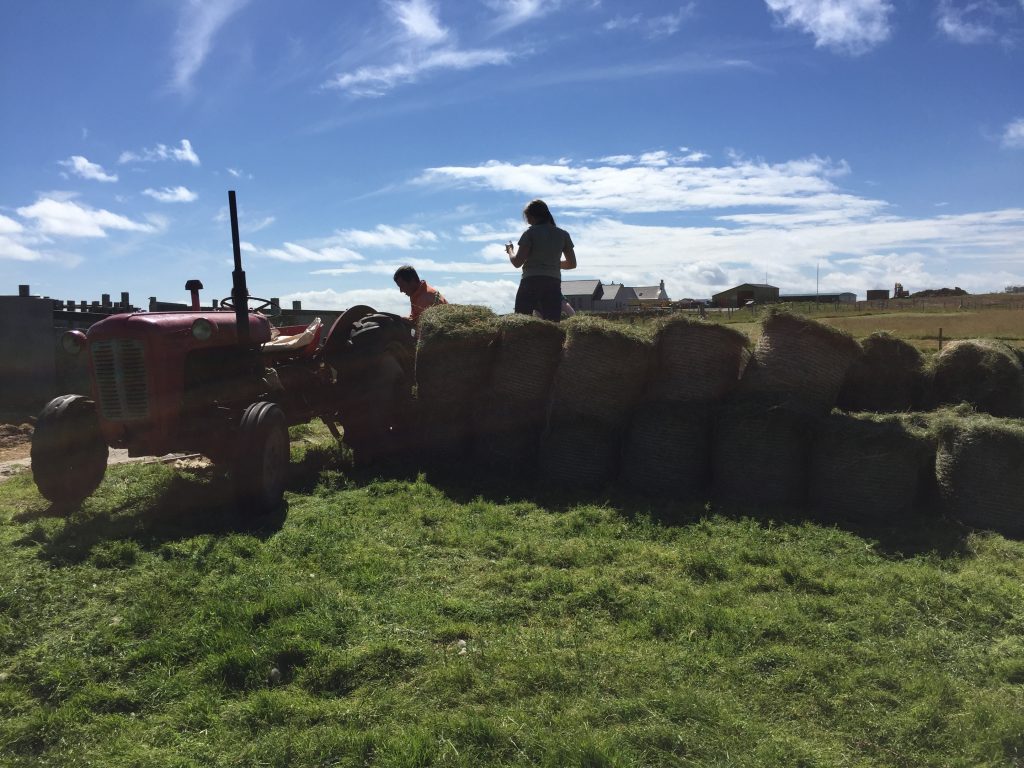
Going back a generation, the island had a stronger community, fuelled by social events. Crofting, however, still brings people together. For example, while the crofters tend to their own sheep and land on the south of the island, the roughly 300 sheep that roam the island’s northern part are a shared responsibility. Everyone comes together four times a year to bring down these wild sheep, to clip and shear them and provide medical care if needed. Crofters also take turns to check on the sheep and, during lambing season, their young. Mowing and baling the grass to prepare for winter, similarly gets the whole population involved. However, the population on the island is aging. Young families are encouraged to come to the island. Many do, but they might be more interested in living in the old house than taking on the croft itself. Of the eighteen crofts on the island, ten are now run by one family, who step in whenever a crofter becomes too old or when outsiders who are assigned the croft don’t want to run it. The change from an island of small crofts to one big farm threatens tradition. Because crofting is not very profitable, many traditional crofters had other jobs on the side, jobs that were crucial for keeping the island going: manning the fire station, crewing the boat, and air strip duties for example. Young families from outside might have other, sufficient types of income and are often not interested in these additional jobs. This too, can endanger traditional island life. Traditions involving religion, music and social gatherings, as well as the local museum, risk being lost if newcomers to the island are not interested in investing time and energy in becoming part of the community.
Crofting and knitting
“In my brain I was a crofter on one side and a knitter on the other side. I don’t think of the two as intertwined. But because you contacted me, you got me thinking about the relationship between the two. The women doing both in itself was a tradition.” Even only thirty years ago, most knitters would also have been crofters. That is not the case anymore and Rachel sees great benefit in using Shetland Wool Week to engage knitters in the entire process, from crofting and raising the sheep to spinning the yarn and knitting local patterns. Changes to the wool industry have had a direct effect on Fair Isle crofters. Raising sheep for meat is now much more profitable than raising them for wool. As a consequence, all crofters on the island breed crosses that ensure a better meat production. Wool has become a by-product. All wool is sold to Jamieson’s of Shetland and everyone on the island knits with Jamieson’s yarn. Because Jamieson’s offers fairer prices than other wool buyers, it is still viable for crofters on the islands to sell their fleeces. Most sheep farmers on the UK mainland no longer sell their fleece at all, sometimes even resorting to burning them, as the sheep have to be clipped anyway. The price mainland farmers receive for their wool these days does not even cover the shipping costs.
Taking responsibility at a financial risk
Rachel has noticed a growing interest amongst hand knitters for small flock and single farm yarns. Through Instagram and Shetland Wool Week she has built up a network of knitters and after three years of research she has decided to return to raising Shetland sheep specifically for the quality of their wool. She can sell her yarn for a much fairer price to hand knitters specifically interested in her croft and flock. She has had to save up her fleeces for two years in order to have a large enough amount for a small spinning mill to be interested in taking her on as a customer. Jamieson’s cannot facilitate her request to keep her yarn separate from all the other yarn they process. Rachel decided to work with Uist Wool, a community mill, run as a social cooperative where yarn is not bleached or dyed and where they are happy to take on smaller batches of yarn. What’s more is that this mill, although not a Shetland business, is also located on a small island in the Outer Hebrides. This change required an upfront investment, but Rachel is hopeful it will pay off. Already, the income from selling her wool and knitwear means she no longer has to sell lambs for meat at the sales.

“Living on Fair Isle comes with a bit of a responsibility. You don’t want to be part of the generation that lost fair isle knitting.” Most knitters and knitwear designers on the island still feel deeply connected with the island traditions, although many also modernise. They might use new colour combinations, for example, and the arrival of the Internet on the island a few years ago has made it possible for them to reach a global audience. Fair Isle knitwear is not protected: a lot of it is produced in a factory on the mainland, but ‘made on Fair Isle’ still holds meaning for some buyers. Fair Isle knitting and knitwear are still popular around the globe, but one does wonder what we lose when the traditional model of crofting is lost on the island.
Based on an interview with Dr Carol Christiansen, Curator and Community Museums Officer at the Shetland Museum and Archives and member of the Shetland Wool Week board, conducted on 7 October 2020, and an interview with Rachel Challoner, crofter on Fair Isle, conducted on 19 April 2021.

